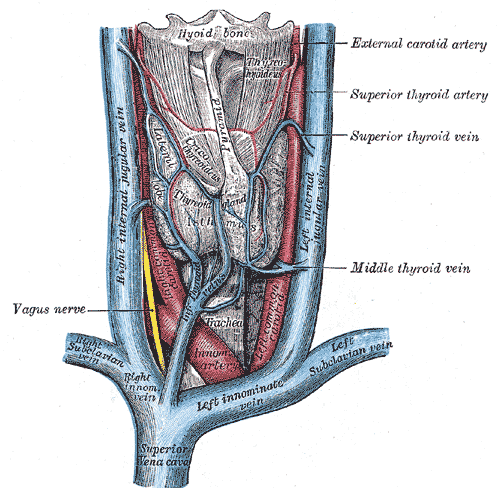[1]
Drouin L,Pistorius MA,Lafforgue A,N'Gohou C,Richard A,Connault J,Espitia O, [Upper-extremity venous thrombosis: A retrospective study about 160 cases]. La Revue de medecine interne. 2018 Aug 16
[PubMed PMID: 30122260]
Level 2 (mid-level) evidence
[2]
Zimmerman S,Davis M, Rapid Fire: Superior Vena Cava Syndrome. Emergency medicine clinics of North America. 2018 Aug
[PubMed PMID: 30037444]
[3]
Carmo J,Santos A, Chronic Occlusion of the Superior Vena Cava. The New England journal of medicine. 2018 Jul 5
[PubMed PMID: 29972752]
[4]
De Potter B,Huyskens J,Hiddinga B,Spinhoven M,Janssens A,van Meerbeeck JP,Parizel PM,Snoeckx A, Imaging of urgencies and emergencies in the lung cancer patient. Insights into imaging. 2018 Aug
[PubMed PMID: 29644546]
[5]
Friedman T,Quencer KB,Kishore SA,Winokur RS,Madoff DC, Malignant Venous Obstruction: Superior Vena Cava Syndrome and Beyond. Seminars in interventional radiology. 2017 Dec
[PubMed PMID: 29249864]
[6]
Kalinin RE,Suchkov IA,Shitov II,Mzhavanadze ND,Povarov VO, [Venous thromboembolic complications in patients with cardiovascular implantable electronic devices]. Angiologiia i sosudistaia khirurgiia = Angiology and vascular surgery. 2017
[PubMed PMID: 29240058]
[7]
Ghorbani H,Vakili Sadeghi M,Hejazian T,Sharbatdaran M, Superior vena cava syndrome as a paraneoplastic manifestation of soft tissue sarcoma. Hematology, transfusion and cell therapy. 2018 Jan-Mar
[PubMed PMID: 30057975]
[8]
Labriola L,Seront B,Crott R,Borceux P,Hammer F,Jadoul M, Superior vena cava stenosis in haemodialysis patients with a tunnelled cuffed catheter: prevalence and risk factors. Nephrology, dialysis, transplantation : official publication of the European Dialysis and Transplant Association - European Renal Association. 2018 Jun 8
[PubMed PMID: 29893920]
[9]
Mansour A,Saadeh SS,Abdel-Razeq N,Khozouz O,Abunasser M,Taqash A, Clinical Course and Complications of Catheter and Non-Catheter-Related Upper Extremity Deep Vein Thrombosis in Patients with Cancer. Clinical and applied thrombosis/hemostasis : official journal of the International Academy of Clinical and Applied Thrombosis/Hemostasis. 2018 Jan 1
[PubMed PMID: 30025472]
[10]
Khan UA,Shanholtz CB,McCurdy MT, Oncologic Mechanical Emergencies. Hematology/oncology clinics of North America. 2017 Dec
[PubMed PMID: 29078930]
[11]
Nossair F,Schoettler P,Starr J,Chan AKC,Kirov I,Paes B,Mahajerin A, Pediatric superior vena cava syndrome: An evidence-based systematic review of the literature. Pediatric blood
[PubMed PMID: 29781569]
Level 1 (high-level) evidence
[12]
Ierardi AM,Jannone ML,Petrillo M,Brambillasca PM,Fumarola EM,Angileri SA,Crippa M,Carrafiello G, Treatment of venous stenosis in oncologic patients. Future oncology (London, England). 2018 Apr 6
[PubMed PMID: 29623736]
[13]
Kalra M,Sen I,Gloviczki P, Endovenous and Operative Treatment of Superior Vena Cava Syndrome. The Surgical clinics of North America. 2018 Apr
[PubMed PMID: 29502774]
[14]
Hague J,Tippett R, Endovascular techniques in palliative care. Clinical oncology (Royal College of Radiologists (Great Britain)). 2010 Nov
[PubMed PMID: 20833516]
[15]
Gradishar WJ,Magid D,Bitran JD, Supportive care of the lung cancer patients. Hematology/oncology clinics of North America. 1990 Dec
[PubMed PMID: 1704881]
[16]
Lianos GD,Hasemaki N,Tzima E,Vangelis G,Tselios A,Mpailis I,Lekkas E, Superior vena cava syndrome due to central port catheter thrombosis: a real life-threatening condition. Il Giornale di chirurgia. 2018 Mar-Apr
[PubMed PMID: 29694310]
[17]
Kuo TT,Chen PL,Shih CC,Chen IM, Endovascular stenting for end-stage lung cancer patients with superior vena cava syndrome post first-line treatments - A single-center experience and literature review. Journal of the Chinese Medical Association : JCMA. 2017 Aug
[PubMed PMID: 28501315]
[18]
Nakano T,Endo S,Kanai Y,Otani S,Tsubochi H,Yamamoto S,Tetsuka K, Surgical outcomes after superior vena cava reconstruction with expanded polytetrafluoroethylene grafts. Annals of thoracic and cardiovascular surgery : official journal of the Association of Thoracic and Cardiovascular Surgeons of Asia. 2014
[PubMed PMID: 23801179]

